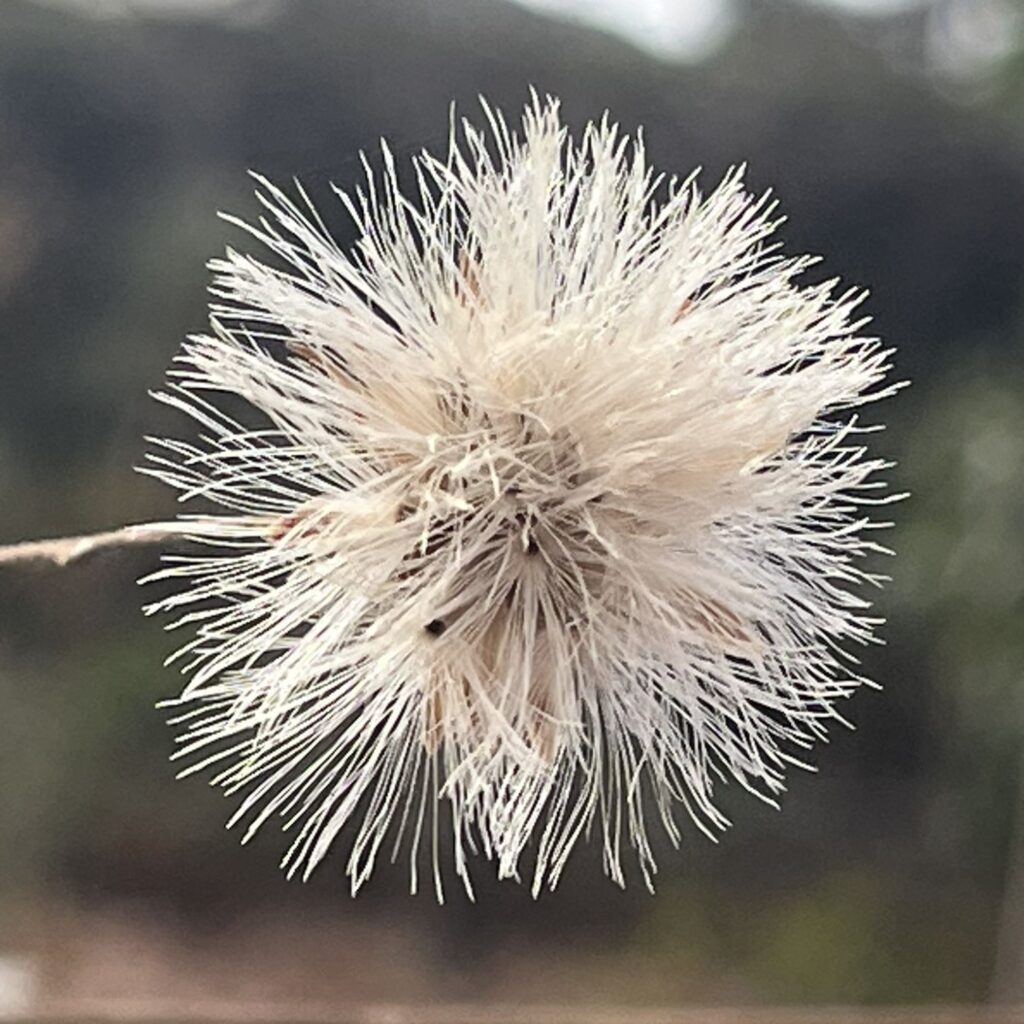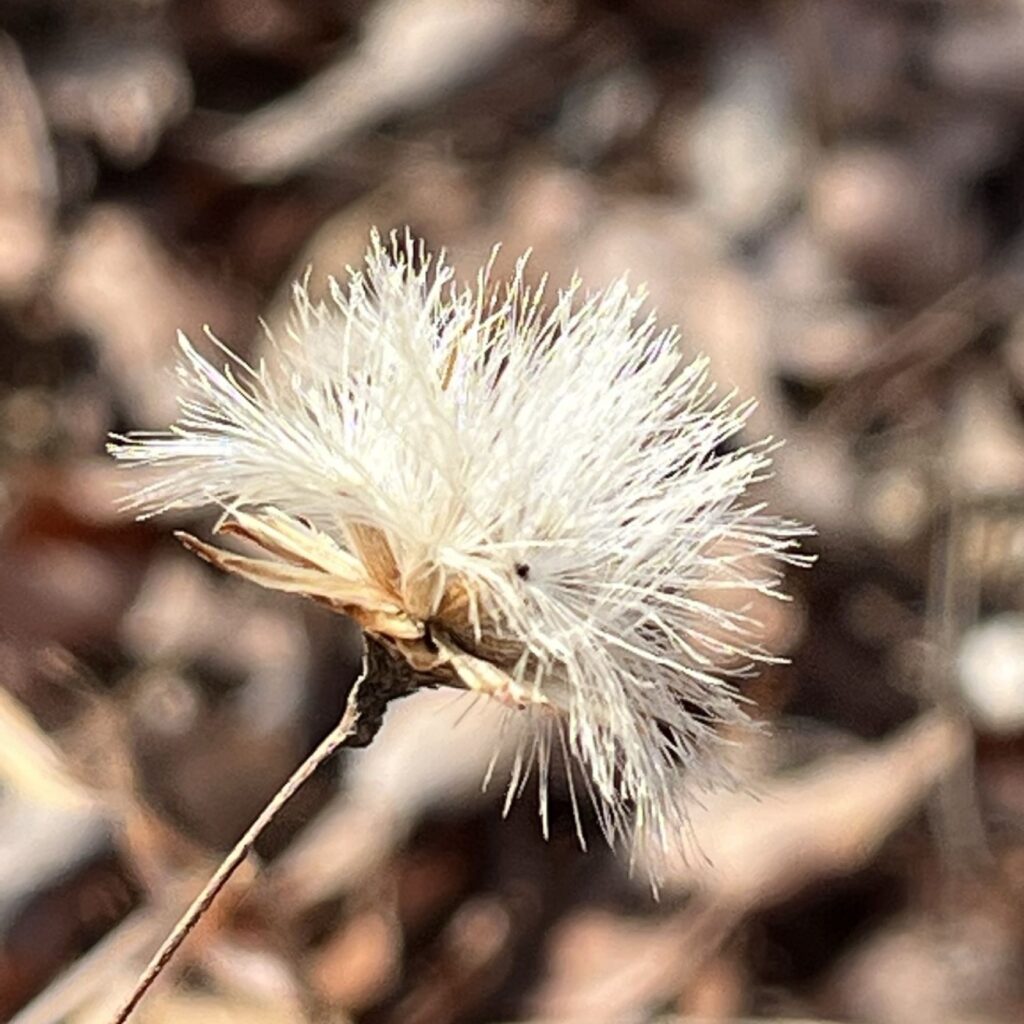コウヤボウキの花は小さな筒状花十数輪が集まって咲きます。小花は深く5裂、雄しべが雌しべを包容。冠毛のついた痩果が風で運ばれます。
Pertya scandens flowers are small tubular flowers that bloom in clusters of a dozen or so. The florets are deeply divided into five lobes, with the stamens enveloping the pistil. The achene with a pappus is carried by the wind.
【仮名】コウヤボウキ
【和名】高野箒
【英名】Pertya scandens
【学名】Pertya scandens
【誕生】11/ 09
【開花】09, 10, 11月
【花色】White, Pink
コウヤボウキ
コウヤボウキの概要

コウヤボウキはキク科の落葉小低木です。日本では関東以西の本州、四国、九州、国外では中国の中南部に分布し、陽当たり、水はけのよい林地で自生。昔から箒や正月飾りなどに用いられ、7~8世紀に編纂された「万葉集」では、大伴家持が「玉箒」という古名で歌を詠みました。
コウヤボウキの名前

コウヤボウキの和名は「高野山の箒」という意味。日本仏教の聖地・高野山では昔、修行者が竹の代わりに、この枝で箒を作りました。ラテン語の属名ペルティアは19世紀のドイツの博物学者マクシミリアン・ペルティへの献名。種小名スキャンデンスは「よじ登る」という意味です。
コウヤボウキの姿形

コウヤボウキの枝は細くしなやかで短毛が生え、盛んに分岐。葉は先の尖った卵形で疎らに鋸歯があります。1年枝では互生、2年枝では束生。花は小さな筒状花十数輪が集まって咲きます。小花は深く5裂、雄しべが雌しべを包容。花後は冠毛のついた痩果が風で遠くに運ばれます。
コウヤボウキの逸話

コウヤボウキの和名の由来となった高野山では、9世紀に弘法大師・空海が真言宗を開き、修行の妨げになる換金作物の栽培を禁じたため、竹が使えなくなりました。さらに、空海は人々を襲う大蛇を竹箒で封印。以来、屋内では高野箒、屋外では黒文字の箒が清掃に用いられました。
Pertya scandens

Pertya scandens is a deciduous shrub of the Asteraceae family. It is distributed in Honshu, Shikoku, and Kyushu west of the Kanto region in Japan, and in central and southern China overseas. It grows naturally in sunny, well-drained forests. It has been used for brooms and New Year decorations since ancient times, and in the collection of poems “Manyoshu” compiled in the 7th and 8th centuries, Otomo no Yakamochi wrote a poem about this plant under the ancient name “Noble Broom”.
The Japanese name of Pertya scandens means “Broom of Mount Koya”. Mount Koya is one of the sacred places of Japanese Buddhism, and practitioners made brooms from this branch instead of bamboo. The Latin genus name Pertya is a tribute to the 19th century German naturalist Maximilian Perty. The specific name scandens means “climbing”.
The branches of Pertya scandens are thin and flexible, covered with short hairs, and branch vigorously. The leaves are pointed, oval, and sparsely sawtoothed. The leaves are alternate on one-year-old branches and in clusters on two-year-old branches. The flowers are small, tubular flowers with a dozen or so flowers. The florets are deeply divided into five lobes, with the stamens enveloping the pistil. After flowering, the achene with the pappus is carried far away by the wind.
In Mount Koya, where the Japanese name Pertya scandens originates, Kobo Daishi Kukai founded the Shingon sect in the 9th century. He then banned the cultivation of cash crops, which he said were a hindrance to his training, and bamboo became unusable. Kukai also sealed away a giant snake that was attacking people with a bamboo broom. Since then, Pertya scandens brooms have been used for cleaning indoors and Lindera umbellata brooms for cleaning outdoors.



